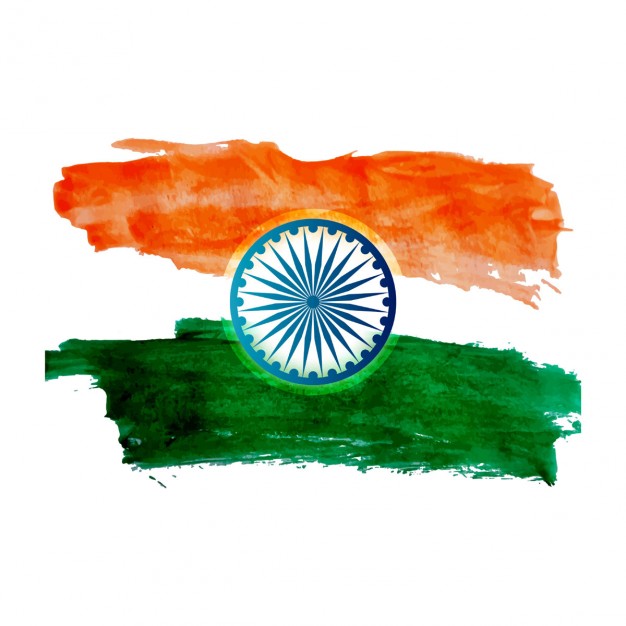The Indian Flag is made using a special type of cloth known as Khadi (hand-spun cloth popularized by the Mahatma Gandhi). The Bureau of Indian Standards is responsible for the manufacturing and designing process of the flag however, Khadi Development and Village Industries Commission gained the rights to manufacture the flag. Karnataka Khadi Gramodyoga Samyukta Sangha became the sole manufacturer of Indian flag in 2009.
The National Flag of India is designed in a horizontal, rectangular shape. It is designed using three colours – saffron (top most), white (middle) and India green (lower most). The middle band contains navy blue Ashoka Chakra (Wheel of Law) in the centre with 24 spokes to the wheel. A number of designs were proposed before the present form of the national flag was adopted in the meeting of Constituent Assembly on 22nd of July in 1947. The Flag was declared as the official flag by the authority of India. It is also called as ‘Tiranga’, meaning three colours and is based on Swaraj flag, designed by Pingali Venkayya.

Symbols
The centre of the flag houses the Ashoka Chakra, the wheel of the dharma and the cosmic law that upholds the order of the universe. Buddhism, Hinduism, Jainism and Sikhism all subscribe to the concept of the dharma. In this way the flag speaks to many of the religious traditions that are present in India. The wheel also represents motion, a reminder that India cannot oppose change as progress is the key to national success in a fast-paced modernizing world.
Saffron
The saffron band is meant to denote courage and selflessness. It is a religiously significant color to the Hindus, Buddhist and Jain religions as it signifies renunciation and the absolution of the ego. It is the color worn in the spirit of detachment and it is meant to remind political leaders to conduct their work without seeking material gains, but rather for the good of the nation.
White
The white band represents honesty, purity and peace, cleanliness and knowledge. It lightens the path of truth to guide India’s national conduct. The white stripe also functions as a reminder to India’s leaders that the ultimate objective is to maintain a state of peace, which was vital to the country considering the bloodshed that surrounded India’s independence and subsequent partition.
Green
The green stripe on the bottom represents faith, fertility and prosperity. It is considered to be a festive and stabilizing color that represents life and happiness. This band is a reminder to political leaders to protect the nation from external enemies as well as human destruction.































